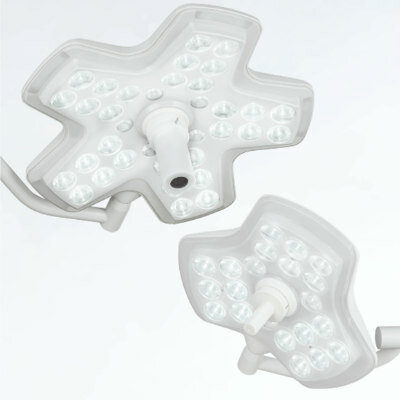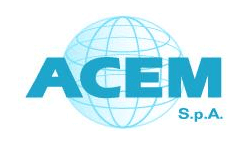Study Shows Infections Are Associated with Subsequent Stroke
|
By HospiMedica International staff writers Posted on 08 Jul 2019 |
A new study shows that infections can trigger an acute ischemic stroke, with the greatest association for urinary tract infection (UTI).
Researchers at the Icahn School of Medicine at Mount Sinai (New York, NY, USA) extracted data from the New York State Inpatient Databases and Emergency Department Databases from 2006 to 2013 in order to examine exposure to skin, urinary tract, septicemia, abdominal, and respiratory infections at different time periods prior to acute ischemic stroke, intracerebral hemorrhage, and subarachnoid hemorrhage episodes. Records for hospitalizations for infections were considered for 7, 14, 30, 60, 90, and 120 days prior to the stroke occurrence.
The results showed that every infection type was linked with an increased likelihood of stroke, with the strongest link seen with UTI, which showed more than three times increased risk of an acute ischemic stroke occurring within 30 days of infection. For intracerebral hemorrhage, occurrence was strongest for urinary tract infections, septicemia, and respiratory infections. Respiratory infection was the only one that was related to the occurrence of subarachnoid hemorrhage. The study was published on June 27, 2019, in Stroke.
“Probing into the previous weeks or months of a patient's life before the stroke can sometimes help to illuminate the possible causes of stroke, if there was an infection during that time,” said senior study author neurologist Mandip Dhamoon, MD, PhD. “These findings suggest that there could be implications for vaccination, antibiotic regimens, or intensive antithrombotic treatments, not only to prevent the infections, but to prevent stroke in those who are deemed high-risk.”
A UTI is an infection involving any part of the urinary system, including urethra, bladder, ureters, and kidney. Among UTIs acquired in the hospital, approximately 75% are associated with a urinary catheter inserted into the bladder through the urethra to drain urine, which are indicated in between 15-25% of hospitalized patients.
Related Links:
Icahn School of Medicine at Mount Sinai
Researchers at the Icahn School of Medicine at Mount Sinai (New York, NY, USA) extracted data from the New York State Inpatient Databases and Emergency Department Databases from 2006 to 2013 in order to examine exposure to skin, urinary tract, septicemia, abdominal, and respiratory infections at different time periods prior to acute ischemic stroke, intracerebral hemorrhage, and subarachnoid hemorrhage episodes. Records for hospitalizations for infections were considered for 7, 14, 30, 60, 90, and 120 days prior to the stroke occurrence.
The results showed that every infection type was linked with an increased likelihood of stroke, with the strongest link seen with UTI, which showed more than three times increased risk of an acute ischemic stroke occurring within 30 days of infection. For intracerebral hemorrhage, occurrence was strongest for urinary tract infections, septicemia, and respiratory infections. Respiratory infection was the only one that was related to the occurrence of subarachnoid hemorrhage. The study was published on June 27, 2019, in Stroke.
“Probing into the previous weeks or months of a patient's life before the stroke can sometimes help to illuminate the possible causes of stroke, if there was an infection during that time,” said senior study author neurologist Mandip Dhamoon, MD, PhD. “These findings suggest that there could be implications for vaccination, antibiotic regimens, or intensive antithrombotic treatments, not only to prevent the infections, but to prevent stroke in those who are deemed high-risk.”
A UTI is an infection involving any part of the urinary system, including urethra, bladder, ureters, and kidney. Among UTIs acquired in the hospital, approximately 75% are associated with a urinary catheter inserted into the bladder through the urethra to drain urine, which are indicated in between 15-25% of hospitalized patients.
Related Links:
Icahn School of Medicine at Mount Sinai
Latest Critical Care News
- Soft Robots Could Donate Their Heart to Humans
- Bioadhesive Strategy Prevents Fibrosis Around Device Implants on Peripheral Nerves
- Miniature Non-Invasive Robotic Catheters to Improve Infertility Treatments
- Stick-On Patch Monitors Baby's Movements In Utero
- EEG-Based AI Technology Accurately Diagnoses Alzheimer’s and Dementia
- Robot Lymphatic System Paves Way for Self-Powered Wearables and Machines
- Focused Ultrasound Technique Successfully Treats Pediatric Brain Cancer
- Nasal Drops Fight Brain Tumors Noninvasively
- AI Helps Optimize Therapy Selection and Dosing for Septic Shock
- Glowing Bacteria ‘Pills’ for Detecting Gut Diseases Could Eliminate Colonoscopies
- Skin-Permeable Polymer Patch Delivers Insulin Non-Invasively Through Skin
- Nanogel Technology Almost 100% Effective in Destroying Drug-Resistant Bacteria Within Hours
- Wearable Ultrasound Sensor Delivers Noninvasive Treatment Without Surgery
- Gel-Free ECG System to Transform Heart Health Diagnosis
- Biodegradable Patch Repairs Damaged Tissue After Heart Attack
- Magnetically Guided Microrobots to Enable Targeted Drug Delivery

Channels
Surgical Techniques
view channel
Minimally Invasive Surgery Proven Safe and Effective for Complex ‘Whipple’ Procedure
Tumors of the pancreatic head often require a highly complex operation known as pancreatoduodenectomy or the Whipple procedure. This surgery involves removing multiple structures and creating several internal... Read more
Catheter-Based Procedures Offer Less Invasive Option for Treatment of Valvular Disease
Valvular heart disease, caused by tight or leaky valves between heart chambers, affects up to 10% of older adults and leads to more than 120,000 deaths globally each year. Traditional open-heart surgery... Read morePatient Care
view channel
Revolutionary Automatic IV-Line Flushing Device to Enhance Infusion Care
More than 80% of in-hospital patients receive intravenous (IV) therapy. Every dose of IV medicine delivered in a small volume (<250 mL) infusion bag should be followed by subsequent flushing to ensure... Read more
VR Training Tool Combats Contamination of Portable Medical Equipment
Healthcare-associated infections (HAIs) impact one in every 31 patients, cause nearly 100,000 deaths each year, and cost USD 28.4 billion in direct medical expenses. Notably, up to 75% of these infections... Read more
Portable Biosensor Platform to Reduce Hospital-Acquired Infections
Approximately 4 million patients in the European Union acquire healthcare-associated infections (HAIs) or nosocomial infections each year, with around 37,000 deaths directly resulting from these infections,... Read moreFirst-Of-Its-Kind Portable Germicidal Light Technology Disinfects High-Touch Clinical Surfaces in Seconds
Reducing healthcare-acquired infections (HAIs) remains a pressing issue within global healthcare systems. In the United States alone, 1.7 million patients contract HAIs annually, leading to approximately... Read moreHealth IT
view channel
EMR-Based Tool Predicts Graft Failure After Kidney Transplant
Kidney transplantation offers patients with end-stage kidney disease longer survival and better quality of life than dialysis, yet graft failure remains a major challenge. Although a successful transplant... Read more
Printable Molecule-Selective Nanoparticles Enable Mass Production of Wearable Biosensors
The future of medicine is likely to focus on the personalization of healthcare—understanding exactly what an individual requires and delivering the appropriate combination of nutrients, metabolites, and... Read moreBusiness
view channel
Philips and Masimo Partner to Advance Patient Monitoring Measurement Technologies
Royal Philips (Amsterdam, Netherlands) and Masimo (Irvine, California, USA) have renewed their multi-year strategic collaboration, combining Philips’ expertise in patient monitoring with Masimo’s noninvasive... Read more
B. Braun Acquires Digital Microsurgery Company True Digital Surgery
The high-end microsurgery market in neurosurgery, spine, and ENT is undergoing a significant transformation. Traditional analog microscopes are giving way to digital exoscopes, which provide improved visualization,... Read more
CMEF 2025 to Promote Holistic and High-Quality Development of Medical and Health Industry
The 92nd China International Medical Equipment Fair (CMEF 2025) Autumn Exhibition is scheduled to be held from September 26 to 29 at the China Import and Export Fair Complex (Canton Fair Complex) in Guangzhou.... Read more













